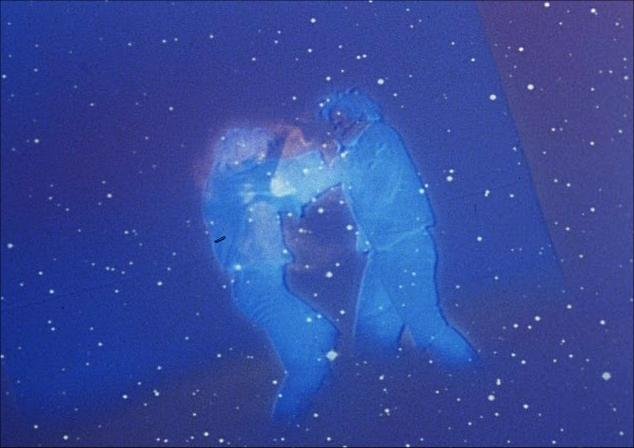Television Review: The Alternative Factor (Star Trek, S1X20, 1967)

The Alternative Factor (S01E20)
Airdate: March 30th 1967
Written by: Don Ingalls
Directed by: Gene Oswald
Running Time: 50 minutes
When Star Trek: The Original Series first aired in 1966, it swiftly established itself as a cornerstone of science fiction television. The first season alone produced a string of episodes that set the standard for the franchise’s intellectual ambition, moral complexity, and genre-defining storytelling. These episodes not only shaped Star Trek’s enduring legacy but also inspired generations of writers, filmmakers, and fans. Yet, even in its golden infancy, the show occasionally stumbled into episodes of such glaring mediocrity that they risked undermining its credibility. Among these missteps, The Alternative Factor stands out as a prime example of a script so poorly conceived and executed that it threatens to derail the series’ nascent promise.
The episode opens with the USS Enterprise investigating an unnamed planet, only to encounter a series of eerie phenomena: flickering lights, malfunctioning equipment, and a dishevelled man (played by Robert Brown) who identifies himself as “Lazarus.” The crew soon learns that the anomalies are not isolated; Starfleet Command confirms that all of its ships have been affected, with the Enterprise left as bait to lure an unseen threat. Through interrogation, Captain Kirk discovers that Lazarus is a fugitive from a parallel universe composed of antimatter, fleeing a doppelgänger who destroyed his civilisation and now seeks to annihilate both realities by merging with him. The solution, as proposed by the crew, involves destroying Lazarus’s “timeship” to seal a “rip in time” before the two adversaries meet.
While The Alternative Factor holds the distinction of being the first Star Trek episode to explore parallel universes, its treatment of the concept is both derivative and intellectually bankrupt. The script, written by Dong Ingalls—a friend of Gene Roddenberry—relies on vague, pseudo-scientific jargon (“rip in time,” “antimatter universe”) without offering even the most rudimentary explanation of how these phenomena function. The idea of matter and antimatter colliding to unleash apocalyptic consequences is tossed aside as little more than a plot device, its scientific plausibility unexamined. The episode’s central conflict—Lazarus’s pursuit of his darker counterpart—lacks tension, as the script never establishes why their confrontation would destroy existence or how the “timeship” mechanism works. The result is a narrative that feels both underdeveloped and overwrought, as if the writer exhausted his creativity in the first draft and never revisited it.
Robert Brown’s portrayal of Lazarus is a masterclass in unintentional comedy, his hammy delivery and exaggerated gestures rendering the character a parody of melodramatic sci-fi villains. The script offers little nuance to his motivations or backstory, reducing him to a one-dimensional antagonist whose sole purpose is to spout ominous warnings. The lack of visual distinction between Lazarus and his alter ego—aside from differing facial hair—further undermines the mystery, leaving viewers to wonder why the crew cannot distinguish the two. Meanwhile, the rest of the cast, including William Shatner and DeForest Kelley, do their best to elevate the material, but their efforts are stifled by the script’s lack of depth. The episode’s climax, in which Kirk orders the destruction of the timeship, is devoid of emotional stakes or intellectual payoff, leaving the audience with a hollow resolution.
The episode’s special effects are its most glaring weakness. The “antimatter” sequences are laughably inadequate, even by 1960s standards. The “timeship” itself, a rudimentary model of a spinning ring, resembles a rejected prop from a low-budget B-movie. Unlike episodes such as Arena, which gained a cult following for its campy charm, The Alternative Factor lacks any redeeming aesthetic quality. Its dated effects and generic score make it feel more like a relic of its time than a pioneering work of science fiction.
The episode’s flaws are compounded by its troubled production history. John Drew Barrymore, originally cast as Lazarus, abruptly withdrew from the project, forcing the producers to replace him with Robert Brown at the last minute. This rushed casting decision left Brown with little time to develop his character, resulting in a performance that feels improvised rather than intentional. The script’s hurried pacing and disjointed dialogue suggest a lack of attention to detail, likely due to budget constraints and tight scheduling. The crew’s disengagement is palpable, with scenes feeling staged rather than acted, and the director’s lack of vision leaving the episode devoid of visual flair.
In the end, The Alternative Factor is an unambitious, poorly executed episode that squanders its premise’s potential. While Roddenberry and his team deserve credit for pioneering concepts like parallel universes, this episode’s failure to capitalise on them is inexcusable. It serves as a reminder that even visionary franchises can produce work of such mediocrity that it borders on offensive to fans. Yet, the episode’s legacy is not entirely without merit: its shortcomings paved the way for later, superior treatments of parallel realities, most notably Mirror, Mirror which explored the theme with wit, nuance, and memorable characterisation. For all but the most devoted completists, The Alternative Factor is best forgotten.
In the annals of Star Trek, this episode stands as a rare misstep, a testament to the series’ human imperfections. But it also underscores the franchise’s resilience: out of its failures, Star Trek learned to prioritise storytelling over spectacle, ensuring that its legacy would be built on episodes of true ambition and originality. For The Alternative Factor, however, its place in history is secured not as a triumph, but as a reminder of what the franchise could—and must—avoid.
RATING: 4/10 (+)
Blog in Croatian https://draxblog.com
Blog in English https://draxreview.wordpress.com/
InLeo blog https://inleo.io/@drax.leo
InLeo: https://inleo.io/signup?referral=drax.leo
Hiveonboard: https://hiveonboard.com?ref=drax
Rising Star game: https://www.risingstargame.com?referrer=drax
1Inch: https://1inch.exchange/#/r/0x83823d8CCB74F828148258BB4457642124b1328e
BTC donations: 1EWxiMiP6iiG9rger3NuUSd6HByaxQWafG
ETH donations: 0xB305F144323b99e6f8b1d66f5D7DE78B498C32A7
BCH donations: qpvxw0jax79lhmvlgcldkzpqanf03r9cjv8y6gtmk9